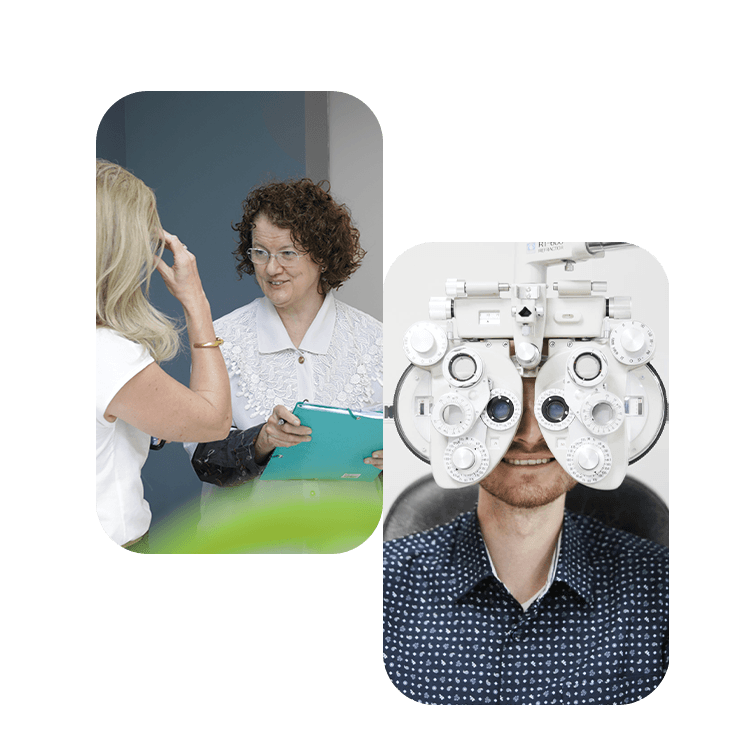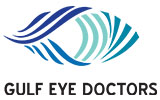Eye Care Designed for You
We provide the highest level of eye care in the safest possible environment for your family.
Make an Appointment
Online Schedule

LASIK in Dubai
LASIK stands for Laser-Assisted In Situ Keratomileusis.
This procedure permanently changes the shape of the cornea, the clear “window” covering of the front of the eye, with an extremely precise computer controlled Excimer Laser. LASIK is an innovative, quick, technically mature surgical procedure with an uncomplicated healing process. It is relatively pain free and takes only a few minutes to correct Myopia, Hyperopia and Astigmatism.





LASIK FAQ's
What is LASIK or Refractive Surgery?
LASIK is a surgical procedure intended to reduce a person’s dependency on glasses or contact lenses.
LASIK stands for Laser-Assisted In-Situ Keratomileusis. It is a procedure that permanently changes the shape of the cornea – the clear covering of the front of the eye – using an excimer laser.
A device called a microkeratome, is used to form a flap in the outer cornea layer. The flap is folded back on a hinge, revealing the stroma – the middle section of the cornea.
With LASIK treatment in Dubai, computer-controlled laser pulses vaporize and sculpt a calculated thin layer off this stroma, and the flap is then replaced to cover the ‘lasered’ area and heal.
LASIK compared to other types refractive surgery procedures:
Radial Keratotomy (RK) and Photorefractive Keratectomy (PRK) are other refractive surgeries used to reshape the cornea.
In PRK, a very sharp knife is used to cut slits in the cornea to change its shape.
PRK was the first laser surgical procedure developed to reshape the cornea by sculpting it with a laser. It was used in the mid to late 1980s.
LASIK was developed later using the same type of laser. The major difference between the two surgeries is the way that the stroma, the middle layer of the cornea, is exposed before it is vaporized with the laser.
In PRK, the top layer of the cornea, called the epithelium, is scraped away to expose the stromal layer underneath.
In LASIK, a flap is cut in the front stromal layer and the flap is folded back.
In thermokeratoplasty, a different type of laser heat is used to reshape the cornea. This option is now rarely used.
Other refractive surgery methods include intra-corneal ring segments (ICRS) that are inserted into the stroma to reshape the cornea and non-surgical customized specialty contact lenses that temporarily reshape the cornea (orthokeratology).
What to expect before LASIK surgery?
If you decide to go ahead with LASIK surgery, you will need an initial or baseline evaluation by your eye doctor to determine if you are a good candidate.
If you are a suitable candidate for the procedure, this is what you need to know to prepare for the exam and what you should expect:
- If you wear contact lenses, it is a good idea to stop wearing them several weeks before your baseline evaluation and switch to wearing your glasses full-time.
- Contact lenses change / warp the shape of your cornea for up to several weeks after you have stopped using them, depending on the type of contact lenses you wear.
- Not leaving your contact lenses out long enough for your cornea to assume its natural shape before surgery can have negative consequences. These can include inaccurate measurements and a bad surgical plan, resulting in poor vision after surgery.
- These measurements, which determine how much corneal tissue to remove, may need to be repeated at least a week after your initial evaluation and before surgery to make sure they have not changed, especially if you wear RGP or hard lenses.
If you wear:
- soft contact lenses, you should stop wearing them for two weeks before your initial evaluation.
- toric soft lenses or rigid gas permeable (RGP) lenses, you should stop wearing them for at least three weeks or more before your initial evaluation.
- hard lenses, you should stop wearing them for at least four to eight weeks before your initial evaluation – in some cases, even 12 weeks or 3 months.
You should tell your doctor:
- about your past and present medical and eye conditions
- about all the medications you are taking, including over-the-counter medicines and any drugs you may be allergic to
The best LASIK surgeons in Dubai will perform a thorough eye exam and discuss:
- whether you are a good candidate
- what the risks, benefits, and alternatives of the surgery are
- what you should expect before, during, and after surgery
- what your responsibilities will be before, during, and after surgery
Take the opportunity to ask your doctor questions during this discussion. Give yourself plenty of time to think about the risk and benefit discussion, review any informational literature provided by your doctor, and to have any additional questions answered by your doctor before deciding to go through with surgery and before signing the informed consent form.
You should not feel pressured by your doctor, family, friends, or anyone else to make a decision about having surgery. Carefully consider the pros and cons yourself.
The day before surgery, you should stop using creams, lotions, makeup & perfumes.
These products as well as debris along the eyelashes may increase the risk of infection during and after surgery.
Your doctor may ask you to scrub your eyelashes for a period before surgery to get rid of makeup residues and debris along the eyelashes. Also, before surgery, arrange for transportation to and from your surgery and your first follow-up visit. On the day of surgery, your doctor might give you some medication to make you relax. This medicine will impair your ability to drive and your vision may be blurry. Even if you don’t drive, make sure someone can bring you home after surgery.
What to expect during LASIK surgery?
The surgery should take less than 30 minutes. You will lie on your back in a reclining chair in an exam room containing the laser system. The laser system includes a large machine with a microscope attached to it and a computer control screen. Before the start of surgery, your specialist in LASIK treatment in Dubai will have already programmed the computer to vaporize a specified amount of tissue based on the measurements taken at your pre-op evaluations.
A numbing drop will be placed in your eye. The area around your eye will be cleaned, and an instrument called a lid speculum would be used to help keep your eyelids open.
A ring will be used to hold onto your eye, and very high pressures will be applied to create measured suction onto the cornea. Your vision will dim while the suction ring is on. You may feel the pressure and experience some discomfort during this part of the procedure. The microkeratome, which is attached to the suction ring, will then create a flap in your cornea.
The microkeratome will then be removed and the suction ring released. You will be able to see, but with fluctuating degrees of blurred vision during the rest of the procedure. Your LASIK specialist will lift the flap and fold it back on its hinge and dry the exposed tissue.
The laser will be positioned over your eye, and you will be asked to stare at a light. This is not the laser used to remove tissue from the cornea. This light is to help you fixate by staring at a fixed object for about 60 seconds.
When your eye is in the correct position, your doctor will start the laser. At this point in the surgery, you may become aware of new sounds and smells.
The pulse of the laser makes a fast ticking sound. As the laser removes corneal tissue, some people have reported a smell similar to burning hair. A computer controls the amount of laser delivered to your eye. After the pulses of laser energy have vaporized the corneal tissue, the flap is put back into position.
A shield will be placed over your eye at the end of the procedure as protection since no stitches are used to hold the flap in place. It is important for you to wear this shield as directed since it will prevent you from rubbing your eye and putting pressure on your eye while you sleep. It will also protect your eye from accidentally being hit or poked until the flap has healed.
What to expect after LASIK surgery?
Immediately after your LASIK in the UAE, your eye may experience a burning or itching sensation. You may also feel like there is something in it.
You may experience some discomfort, or in some cases, mild to moderate pain. Your doctor may suggest you take a mild pain reliever. Both your eyes may tear or be watery as well. Additionally, your vision will probably be hazy or blurry.
Your vision will probably be hazy or blurry.
Your doctor may give you one or more types of eye drops to take at home to help prevent infection and inflammation. You may also be advised to use artificial tears to help lubricate the eye.
** Do not resume wearing a contact lens in the operated eye, even if your vision is blurry.
You will instinctively want to rub your eye but don’t. Rubbing your eye could dislodge the flap, requiring further treatment.
You may experience sensitivity to light, glare, starbursts, or haloes around lights. The whites of your eye may look red or bloodshot as well. These symptoms should improve considerably within the first few days after surgery.
You should plan on taking a few days off from work until these symptoms subside. You should contact your doctor immediately and not wait for your scheduled visit, if you experience severe pain, or if your vision or other symptoms get worse instead of better.
You should see your doctor within the first 24 hours after surgery and at the regular arranged intervals after that for at least the next six months.
At the first postoperative visit, your LASIK specialist in Dubai will remove the eye shield, test your vision, and examine your eye.
You should wait for one to three days following surgery before beginning any non-contact sports. Additionally, consider the amount of activity required, how you feel, and your doctor’s instructions.
To help prevent infection, you may need to wait for up to two weeks after surgery or until your ophthalmologist advises you before using lotions, creams, or make-up around the eye. Your doctor may advise you to continue cleaning your eyelashes for a period of time after surgery.
You should also avoid swimming and using hot tubs or whirlpools for one to two months.
Strenuous contact sports such as boxing, football, karate, etc. should not be attempted for at least twelve weeks after surgery. It is crucial to protect your eyes from anything that might get in them and from being hit or bumped to shift the flap.
During the first few months after surgery, your vision may fluctuate.
* It may take up to three to six months for your vision to stabilize after surgery.
* Glare, haloes, difficulty driving at night, and other visual symptoms may also persist during this stabilization period.
*If further correction or enhancement is necessary, you should wait until your eye measurements are consistent for two consecutive visits at least 3 months apart before re-operation.
* It is important to realize that although distance vision may improve after re-operation, it is possible that other visual symptoms such as glare or haloes might not improve.
* It is also important to note that no laser company has presented enough evidence for the FDA to make conclusions about the safety or effectiveness of enhancement surgery.
Contact your eye doctor immediately, if you develop any new, unusual, or worsening symptoms at any point after surgery. Such symptoms could signal a problem that, if not treated early enough, may lead to significant loss or deterioration of vision.
What are the risks?
Most patients are very pleased with the results of their LASIK treatment in Dubai. However, like any other medical procedure, there are risks involved. That’s why it is important for you to understand the limitations and possible complications of refractive surgery.
Before undergoing refractive surgery, you should carefully weigh the risks and benefits based on your personal value system, and try to avoid being influenced by friends that have had the procedure or doctors encouraging you to do so.
- You may be under treated or over treated. About 80-85% of patients achieve 20/20 vision without glasses or contacts.
You may require additional treatment, but further treatment may not be possible. You might still need glasses or contact lenses after surgery. This may be true even if you only required a very weak prescription before surgery.
If you used reading glasses before surgery, you may still need reading glasses after surgery unless you opted for monovision. - Results are generally not as good in patients with large amounts of astigmatism or substantial refractive errors of any type.
You should discuss your expectations with your doctor and realize that you may still require minor glasses or contacts after the surgery. - Results may not be long lasting. The level of improved vision you experience after surgery may be temporary, especially if you are farsighted or currently need reading glasses. **It is especially important for farsighted and astigmatic individuals to undergo cycloplegic refraction (a vision exam with lenses after dilating drops) as part of the screening process. Patients whose manifest refraction (a vision exam before dilating drops) is very different from their cycloplegic refraction are more likely to have temporary results.
- Some patients lose the quality of vision . Some patients lose lines of sight on the vision chart that cannot be corrected with glasses, contact lenses, or surgery as a result of treatment. Refractive procedures may affect other aspects of vision, such as contrast sensitivity (the ability to see objects clearly against a similar background or in dim lighting conditions). Some studies suggest that patients do not see as well in situations of low contrast, such as at night or in fog, after refractive treatment as compared to pre-op.
- Therefore, patients with low contrast sensitivity, to begin with, should not undergo LASIK in the UAE. It is important for you to know that not all eye centers test contrast sensitivity and that when it is tested, it should be done in a dark room.
- Some patients may develop severe dry eye syndrome . As a result of surgery, your eye may not be able to produce enough tears to keep the eye surface moist and comfortable. This condition may be permanent. Intensive drop therapy and the use of plugs or other procedures may be required.


